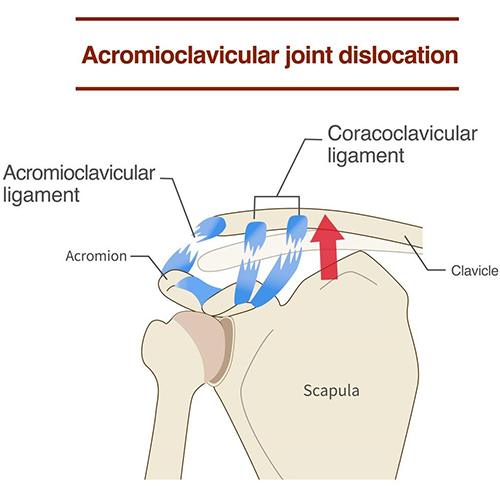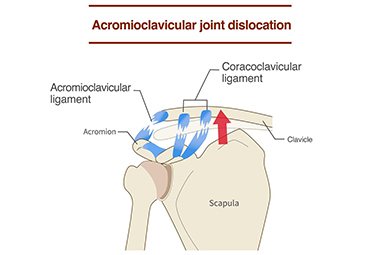
Football fans were shocked to see Trevor Lawrence, the Jacksonville Jaguars’ star quarterback, sustain an AC (acromioclavicular) joint injury during a recent game and elect to end his season to undergo surgery. AC joint injuries are common in contact sports like football, and can range from mild to severe.
What Is an AC Joint Dislocation?
The AC joint is located where the collarbone (clavicle) meets the highest point of the shoulder blade (acromion). It plays a crucial role in shoulder movement and stability. An AC joint dislocation, often called a “shoulder separation,” occurs when the ligaments supporting the joint are stretched or torn, typically due to a fall or direct impact on the shoulder.
Types of AC Joint Injuries
AC joint injuries are classified into six grades based on severity:
- Grade 1: Mild sprain with intact ligaments.
- Grade 2: Partial tear of the ligaments, leading to minor joint instability.
- Grade 3: Complete tear of the ligaments, causing noticeable joint separation.
- Grades 4-6: Severe injuries involving significant displacement and damage to surrounding structures.
Symptoms and Diagnosis
Patients with an AC joint dislocation often report:
- Pain at the top of the shoulder.
- Swelling and bruising.
- A visible bump over the AC joint in severe cases.
- Difficulty lifting or moving the arm.
Diagnosis typically involves a physical exam and imaging, such as X-rays, to confirm the severity.
Treatment Options
Treatment depends on the grade of the injury:
- Non-surgical: Grade 1, 2 and most Grade 3 injuries usually heal with rest, ice, physical therapy, and anti-inflammatory medications. Athletes can often return to play within weeks.
- Surgical: Grades 4-6 may require surgery to stabilize the joint, particularly in high-demand athletes like quarterbacks. Postoperative rehabilitation is essential for a full recovery.
Prognosis and Return to Play
While most AC joint injuries heal well with proper treatment, the timeline for return to sports varies. Non-surgical cases may recover in 2-6 weeks, whereas surgical cases can take months. As fans, we hope for a speedy recovery for Trevor Lawrence and look forward to seeing him back on the field next season. If you’ve experienced a shoulder injury or think you might have an AC joint issue, consulting a specialist is the first step toward recovery.
Dr. Brian W. Hill specializes in shoulder injuries and offers personalized care to help patients get back to their active lives. Contact us today to learn more.
AUTHOR: Brian W. Hill, M.D. is a board-certified shoulder surgeon at Palm Beach Orthopedic Institute. He is an expert in advanced reconstructive and arthroscopic techniques, and serves as an assistant team physician for the Washington Nationals and their affiliates. Dr. Hill treats shoulder injuries and arthritis with a focus on patient-centered care and clear communication.






